What's the Difference Between a Webinar and a Virtual Event?

Table of Contents
Maximize Your Marketing ROI
Join 10,000 other marketers already getting the best tips on running engaging events that boost pipeline and create raving fans.
In 1989, the web was gifted to the world. And by 1996, a whole new kind of business tool had emerged: the webinar.
That’s right. Webinars have been kicking around longer than Amazon.
Microsoft was among the first providers to get in on the action and by 1999, Webex had found its place in the market too.
By 2008, the likes of Jason Fladlien — a.k.a. The ‘$100 Million Dollar Webinar King’ — had harnessed and monetized the power of webinars, working with nine-figure organizations to create webinars that generate over $1 million in revenue.
And then the pandemic hit.
This was the moment webinars really started getting the props they deserve.
But as Zoom-fatigue set in, audiences wanted new ways to engage online. And that’s where the difference between webinars and virtual events started to get a little hazy.
Put simply? Webinars are just one type of virtual event.
And as virtual event platforms evolve, other types of events now offer slicker features, increased engagement, and attendee data that goes far beyond the classic webinar capabilities.
But don’t worry. We’re not about to throw the proverbial ‘webinar baby’ out with the bath water. A well-produced webinar definitely still has its place in the modern field marketing playbook.
But where is that place, exactly? And how do you know when to host a webinar vs. virtual event? Let’s dive into some answers.
Here’s what we’ll cover:
- Webinars vs. Virtual Events: Unblurring the lines
- The top 5 differences between webinars and virtual events
- Is it ‘ta-ta’ to the webinar? How to choose your event type.
Webinars vs. virtual events: Unblurring the lines 🔀
First things first, let’s firm up on exactly how webinars and virtual events are defined in a post-pandemic world.
Definition of a webinar
A webinar is a (pretty unoriginal) term for a ‘web-based seminar’.
Webinars take all the elements from a seminar — a meeting of people, a topic, a discussion, a presenter and a visual display — and move it to the web. When webinars first took off, they were a big step up from the dated video presentations of the day (shout out to the glitchy overhead projectors with their ‘authentic’ grainy quality). 📽️
Webinars allow participants and speakers to interact — asking questions, knowledge-sharing, and networking from across the world.
Definition of a virtual event
After 30 blissful years with the web, it’s no surprise marketers seized the opportunity to take webinars into the 21st century. Enter: virtual events.
With virtual events, marketers could extend their event over a longer time span and branch out from their more singularly-focused webinar beginnings to host product launches, summits, conferences and even entirely virtual gala events.
From branding options, engagement features, attendee data and beyond — virtual event platforms elevated every part of the online event experience.
And that’s where the differences start, but it certainly isn’t where they end.
The top 5 differences between webinars and virtual events
If you’ve ever attended either one, you probably already understand some of the key differences between a webinar and virtual event.
But if we dig a little deeper, we can break it down into five core areas that differentiate the two contenders. If you’re not sure when to reach for a webinar vs. a virtual event, this quick hit list will help you find your answer.
#1: Virtual events are multi-dimensional. Webinars go big on a single topic.
Webinars tend to have one objective: to learn about a single topic. And one pretty familiar format: a speaker, a presentation, and a Q&A.
While this can be a great format for achieving a wide array of marketing goals, a virtual event takes it a step further by more closely mirroring the in-person event experience.
When you attend a conference in real life, there is usually a whole buffet of content sessions on the program. If you select the right virtual event platform, your attendees can mirror that experience online — dipping into talks, browsing other rooms and really personalizing their event experience along the way.
Of course, if you’re an event pro, you’ve likely already found a way to jazz up your webinars and make them great. But if you’re looking to really nail that attendee experience, you want to be doubling down on content: pre-recorded videos, resource centers, sponsor areas, live sessions and demo booths.
All of which is made easier in a dynamic virtual event format.
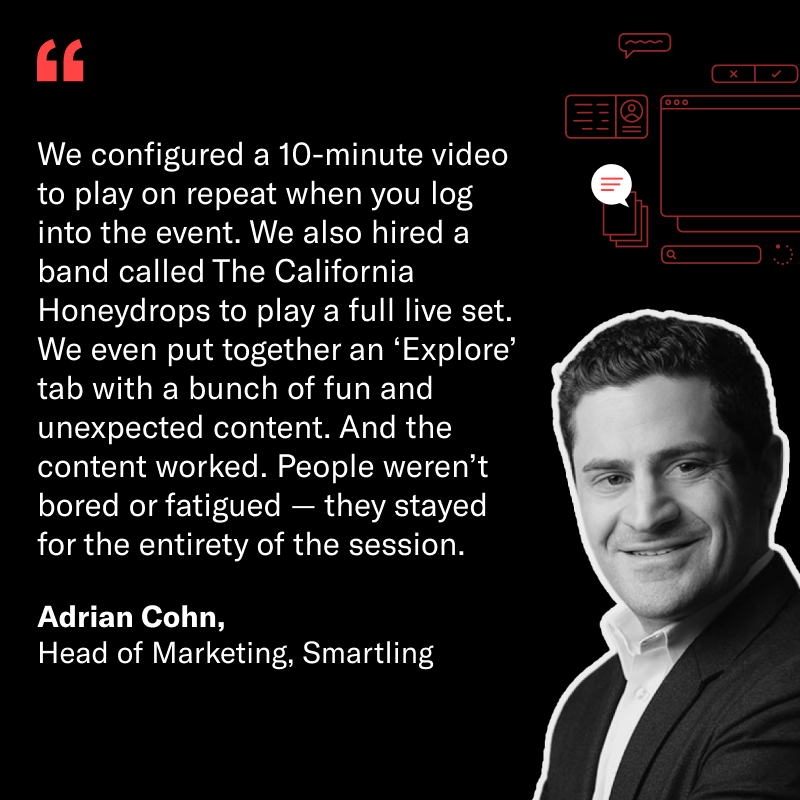
#2: Webinars provide surface-level attendee data. Virtual events let you dive in deep.
For decades, field marketers have been rocking the event scene, often with little to show for it aside from the occasional glowing attendee review.
After the event, marketers were left wondering if they’d really hit the mark.
→ Did the event boost ROI?
→ Grow brand awareness?
→ Accelerate the pipeline?
You could have produced the world’s most epic gathering and the boardroom would still glaze over it in your quarterly review.
Because without data, there’s no way of proving your success.
Webinars helped change that. Suddenly, attendee data was readily available. Event marketers could easily see who attended, how long they stayed, what questions were asked in the chat, and more.
But virtual events really took data to the next level.
With better content options, session choices, and formatting variety — event marketers can now access everything from time in session to net new pipeline, and even attributable revenue.
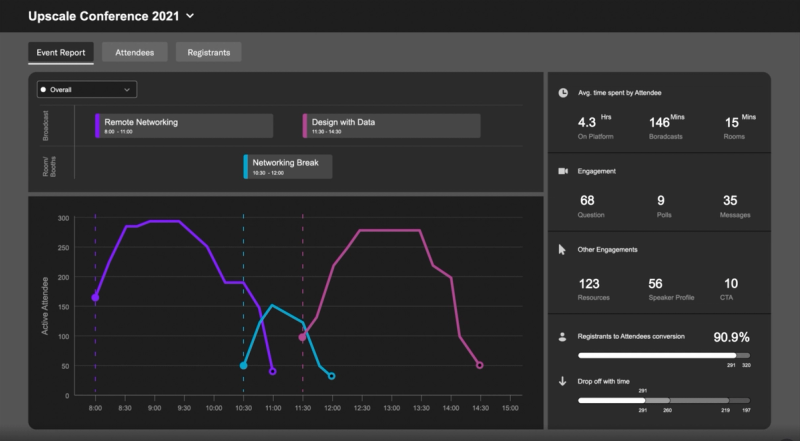
All of your must-have event KPIs are seamlessly tracked and — if you use a platform that integrates with the rest of your marketing tech stack — you can send that intel straight into your CRM and seamlessly pass the baton to sales.
#3: Virtual events provide account-level insights. Webinars give you group data.
As a revenue-marketer, closing deals is a pretty big, well...deal.
And that’s why the handoff to sales is so crucial. Because virtual events can be your secret weapon to achieving your revenue goals. But you have to go all in on follow-up.
As we hinted at in the previous point, webinars allow you to track the basic attendee journey: if they turned up, if they stayed for the duration, and how they interacted.
With virtual events, you can track every single step each individual attendee takes throughout their event experience. Every click they make, session they view, resource they download, poll they answer, question they ask, booth they visit, conversation they have, and more. Phew!
It’s a lot of data.
So, why do you need such a deep pool of attendee-level insights?
In short, the more insights you have on each account in your pipeline, the more specific and need-meeting the conversation becomes. Remember, customers who feel recognized by a company are 90% more likely to buy your product.
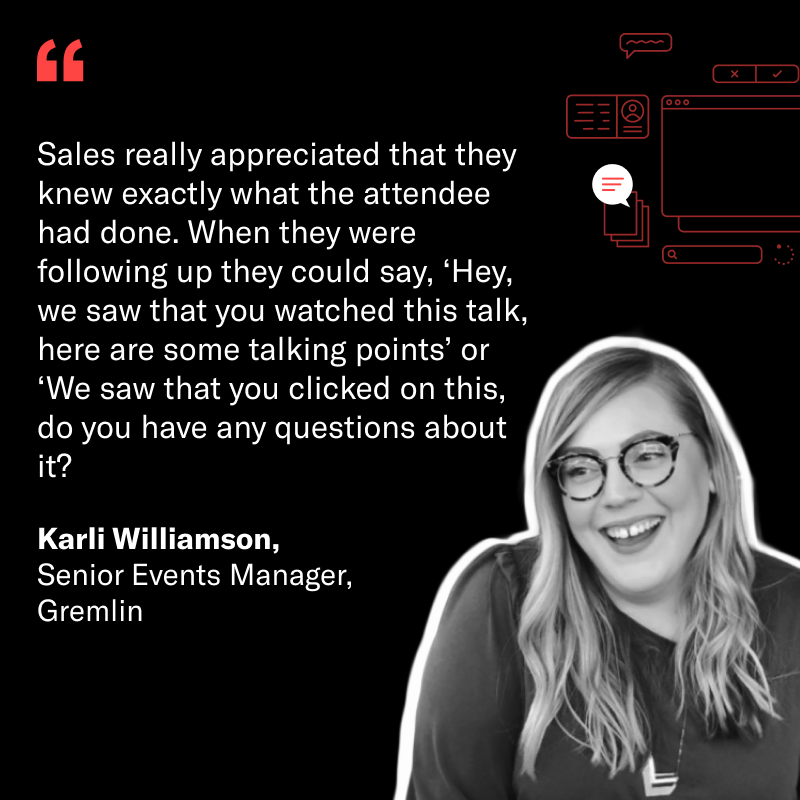
#4: Virtual events go big on engagement. Webinars keep it simple.
Webinar attendance can be a tick-box exercise — you sign up, grab your attendance mark, and improvise your way through a quick quiz on what you saw.
And that isn’t because webinars can’t be great — there is some awesome webinar content out there.
But they often fall into one major trap: they stick to the status quo when it comes to an engaging format. The attendee shows up, sits, listens, asks a question or two and leaves. 🤷
Virtual events really shake things up when it comes to engagement.
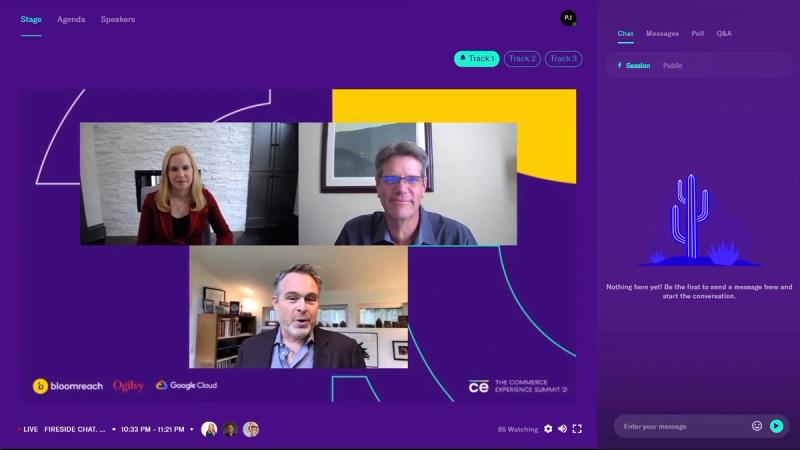
With the right platform, your attendees can jump from interactive polls, to networking rooms, sales booths, live sessions, pre-recorded videos and fireside Q&As. You can even encourage them to explore deeper by gamifying the event with a points system.
With audience engagement cited as the largest challenge for field marketers, fun and simple features to help keep your audience engaged make up one of the major differences between webinars and virtual events.
#5: Virtual events tell your brand story. Webinars stick to the topic.
Most webinars are pretty standard, but that doesn’t mean they can’t tell a compelling story. And at the end of the day, isn’t that what building a stellar brand is really all about?
Leading with a compelling narrative is typically easier with virtual events because they allow for more flexibility and creativity in terms of the format, the way content is presented, and the engagement options that help you build better connections with attendees.
And although your webinar audience generally knows what to expect, you can still take a page from the virtual event playbook and surprise and delight them with something new and unexpected.
For example, with whitelabel virtual event tools, you can create a fully branded event experience to differentiate your event from the competition and position your org as an industry thought-leader.
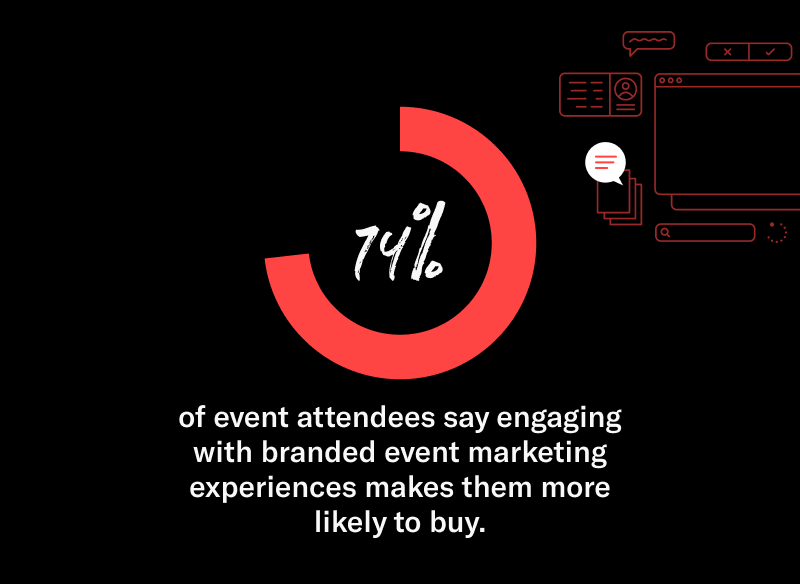
Because while out-of-the-box webinar platforms can make great teaching tools, they’ll never be able to tell your brand story the way it deserves to be told. Especially when you consider that 74% of event attendees say that engaging with branded event experiences make them more likely to buy.
So is it ‘ta-ta’ to the webinar? 👋🏽
It might sound like we’ve given webinars a swift send-off. But that’s not exactly the case. Because if you’re anything like Salesloft’s Director of Global Event Marketing, Jennifer Cummings, you can make webinars just as epic as virtual events.
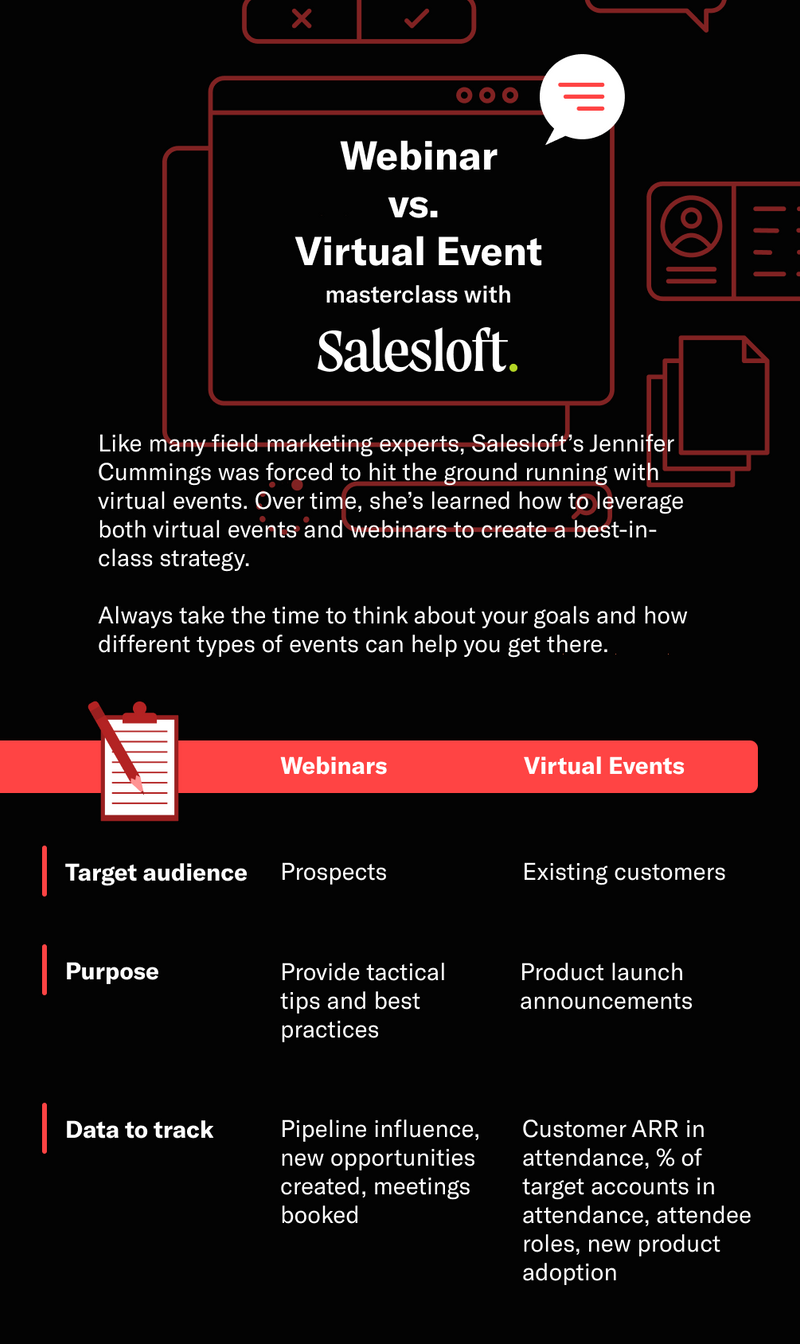
Even though virtual events take the crown in most areas, it doesn’t mean you need that crown for every occasion.
Stellar event strategies need variety. And webinars have maintained their spot in high-ROI event game plans for a reason.
There are also times when curating a full virtual event just isn’t possible (or necessary). Whether it’s time, budget or buy-in, webinars will always be there to help fill a knowledge and marketing gap, and we shouldn’t take that for granted.
Focus on what you and your attendees want from a virtual event
To the untrained eye, the differences between webinars and virtual events might seem pretty nuanced, but they all boil down to the same two questions:
- What do you want to achieve with your event?
- And what do your attendees hope to gain?
If you have multiple objectives, are laser-focused on data, and want to wow your audience with a fully branded event experience, then virtual events are your go-to.
But if it’s more about getting your knowledge out there, sharing content on a single topic, and limiting the time investment on both sides — don’t be afraid to whip out a webinar.
With the right content and platform, there’s no reason you can’t leverage both options to make your revenue goals a reality.

Transform Your Video Marketing with AI
Stay In Touch
Platform
Resources
© 2026 Copyright Goldcast, Inc. All rights reserved.





 Upcoming Events
Upcoming Events Event Series
Event Series On-Demand Events
On-Demand Events

